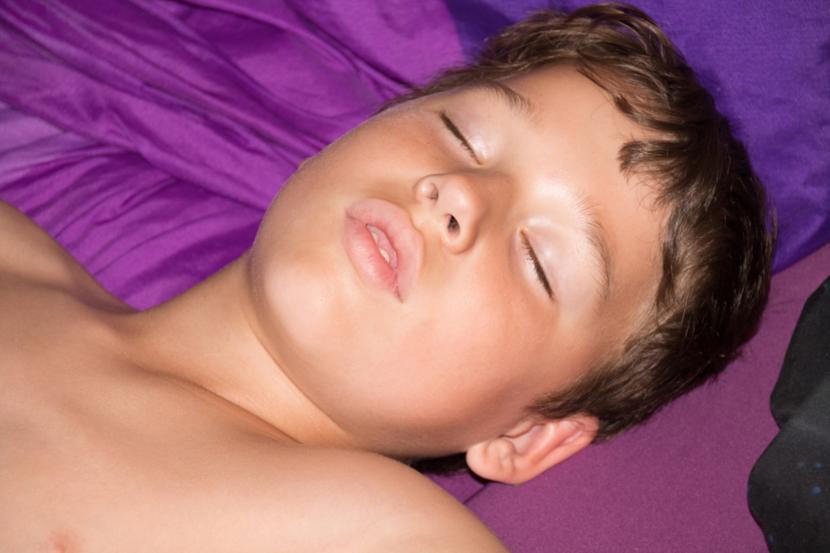Researchers Developing a New Test for Childhood Sleep Apnea

Although sleep apnea is a common issue in American population, the condition defined as the repeated interruption of breathing during the sleep time is not so frequently found in children. However, taking into account how obesity levels in children have increased during the last decade, and keeping in mind obesity is one of the signs displayed by most people suffering from sleep apnea, it is not difficult to suppose it can be displayed by some children.
One of the first signs of children suffering from sleep apnea is constant snoring, after noticing habitual snoring in a child it is easy to determine if that child suffers from sleep apnea with a new, easy, inexpensive and reliable test that analyses oxygen levels in the blood while being asleep. The accuracy of the test has demonstrated to be considerably higher in children who suffer from severe sleep apnea, however this cannot be mentioned as a drawback having in mind severe sleep apnea is the most common manifestation of the disease.
Lack of clinical approaches for children suffering from sleep apnea
The most popular and preferred evaluation for sleep apnea diagnosing in the U.S is the polysomnography. Said test is based on the use of an oximeter that is a simple device designed for the recording of oxygen levels in the blood but adding additional components such as the evaluation and monitoring of brain activity, eyes and leg movement assessment and the recording of cardiac signal and muscular tension. With a videocamera recording the test during the night, this evaluation is considered very complete and accurate but it is very expensive as well.
Clinical sleep laboratories are scarce, not to mention how tiny the amount of certified pediatric sleep specialists is. The lack of facilities to evaluate children while sleeping, the high costs of sleep tests and the difficulty of finding overnight staff leads to minor quantity of children suffering from sleep apnea being thoroughly evaluated, diagnosed and treated even in the U.S and Europe, not to mention how difficult it is to have them tested in less developed countries with much less resources for sleep studies.
This lack of resources have led groups of researchers around the world to look for a more affordable way to test children. One of said studies remains as the most promising one. David Gozal, the study’s senior author and professor of pediatrics at the University of Chicago has said the simplification of the procedure can dramatically reduce its costs, evaluating more children who are at significant risk, especially in those areas where the access to a pediatric sleep laboratory facility is limited.
A new study led by the simplification of procedures
The study describes an automated system developed by a multinational group of researches that is based on a diagnostic neural-network algorithm with more than 20 analytic features that assure the accuracy of the test. In order to have the patient tested a pulse oximeter is connected to them as well and it measures their heart rate and the level of oxygen in the blood during the night. Surprisingly the study remains as a practical and accessible choice when compared to a full sleep study. It is estimated that the final cost of the tests is at least 90% less than a full sleep study.
Taking into account that most people that display the symptoms of an obstructive sleep apnea are usually affected by a severe level of the disease, it is not difficult for the oximeter to give accurate data on the heart rate and blood-oxygen levels overnight while removing all extra devices and evaluations and therefore the extra charges caused by them. However, in the tests, the data provided by oximetry was of limited additional value, meaning the procedure have yet to be developed and improved.
In order to determine whether it is a good idea or not to replace polysomnography with an oximeter-based automated system, more than 4,000 studies were performed on children aged 2 to 18 years old at any of the 13 leading pediatric sleep laboratories around the world. These kids had frequent snoring and other signs of obstructive sleep apnea.
Nevertheless, doctor Gozal stated that the effort to cut back on resources for sleep apnea tests could be seen as a major advance due to the possibility of accessing to useful information by implementing a diagnostic tool that is so easy to use such as the oximeter. Not only does it require less constant monitoring and therefore no overnight staff but it also lowers the costs of screening making it a highly efficient way to detect children at high risk due to obstructive sleep apnea and getting them into treatment.
Accuracy as a major advantage of using oximetry to test sleep apnea on children
One of the most convincing aspects about oximetry being used as a way to diagnose sleep apnea on children is its accuracy, which increases robustly as the disease severity increases. When the study was being carried out, the test detected 75% of children that participated on the evaluation who were suffering from mild apnea. Most of these kids will not require any kind of treatment. The test also detected 82% of the cases studied were cases displaying a moderate level of this disease as well as 90% of total cases of severe sleep apnea. The study suggests that children that were not qualified to receive treatment should be retested within the next few weeks if symptoms persisted.
Even though sleep apnea is way more common in adults than in children, it is a condition that affects 3-5% of all children in the world and it may be more harmful for them than for adults due to the way the persistent interruption of breathing affects children’s cognitive and physical development as well as it increases the chances of suffering from diabetes, hypertension and other chronic conditions when they grow up.














